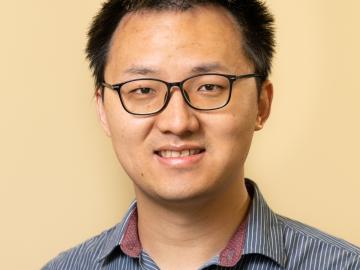
Filter News
Area of Research
- Advanced Manufacturing (3)
- Biology and Environment (60)
- Clean Energy (82)
- Climate and Environmental Systems (1)
- Computational Biology (1)
- Computational Engineering (1)
- Computer Science (1)
- Fusion and Fission (11)
- Fusion Energy (7)
- Isotope Development and Production (1)
- Isotopes (6)
- Materials (43)
- Materials for Computing (8)
- National Security (18)
- Neutron Science (18)
- Nuclear Science and Technology (15)
- Nuclear Systems Modeling, Simulation and Validation (1)
- Quantum information Science (2)
- Supercomputing (25)
- Transportation Systems (2)
News Type
News Topics
- (-) Advanced Reactors (27)
- (-) Biology (62)
- (-) Biomedical (38)
- (-) Chemical Sciences (51)
- (-) Cybersecurity (27)
- (-) Space Exploration (13)
- (-) Transportation (79)
- 3-D Printing/Advanced Manufacturing (94)
- Artificial Intelligence (49)
- Big Data (34)
- Bioenergy (57)
- Biotechnology (14)
- Buildings (43)
- Clean Water (21)
- Climate Change (62)
- Composites (22)
- Computer Science (115)
- Coronavirus (34)
- Critical Materials (25)
- Decarbonization (46)
- Education (3)
- Element Discovery (1)
- Energy Storage (90)
- Environment (125)
- Exascale Computing (16)
- Fossil Energy (2)
- Frontier (21)
- Fusion (30)
- Grid (46)
- High-Performance Computing (53)
- Hydropower (8)
- Irradiation (3)
- Isotopes (36)
- ITER (6)
- Machine Learning (30)
- Materials (109)
- Materials Science (99)
- Mathematics (6)
- Mercury (9)
- Microelectronics (1)
- Microscopy (38)
- Molten Salt (7)
- Nanotechnology (46)
- National Security (39)
- Net Zero (8)
- Neutron Science (91)
- Nuclear Energy (67)
- Partnerships (29)
- Physics (44)
- Polymers (27)
- Quantum Computing (15)
- Quantum Science (40)
- Renewable Energy (1)
- Security (18)
- Simulation (22)
- Software (1)
- Statistics (2)
- Summit (30)
- Sustainable Energy (95)
- Transformational Challenge Reactor (4)
Media Contacts

Brian Sanders is focused on impactful, multidisciplinary science at Oak Ridge National Laboratory, developing solutions for everything from improved imaging of plant-microbe interactions that influence ecosystem health to advancing new treatments for cancer and viral infections.

Oak Ridge National Laboratory scientists have developed a method leveraging artificial intelligence to accelerate the identification of environmentally friendly solvents for industrial carbon capture, biomass processing, rechargeable batteries and other applications.

ORNL's Guang Yang and Andrew Westover have been selected to join the first cohort of DOE’s Advanced Research Projects Agency-Energy Inspiring Generations of New Innovators to Impact Technologies in Energy 2024 program. The program supports early career scientists and engineers in their work to convert disruptive ideas into impactful energy technologies.

Bill Partridge, a recently retired distinguished researcher at the U.S. Department of Energy’s Oak Ridge National Laboratory, was recognized by DOE’s Vehicle Technologies Office, or VTO, for leading world-class research in transportation throughout his 25-year career.

Researchers at ORNL have successfully demonstrated the first 270-kW wireless power transfer to a light-duty electric vehicle. The demonstration used a Porsche Taycan and was conducted in collaboration with Volkswagen Group of America using the ORNL-developed polyphase wireless charging system.

An Oak Ridge National Laboratory team revealed how chemical species form in a highly reactive molten salt mixture of aluminum chloride and potassium chloride by unraveling vibrational signatures and observing ion exchanges.

Jinghui Yuan, an R&D staff member in the Applied Research for Mobility Systems group at the Department of Energy’s Oak Ridge National Laboratory, has been elevated to a senior member of the Institute of Electrical and Electronics Engineers.

Oak Ridge National Laboratory scientists ingeniously created a sustainable, soft material by combining rubber with woody reinforcements and incorporating “smart” linkages between the components that unlock on demand.

Early career scientist Frankie White's was part of two major isotope projects at the same time he was preparing to be a father. As co-lead on a team that achieved the first synthesis and characterization of a radium compound using single crystal X-ray diffraction and part of a team that characterized the properties of promethium, White reflects on the life-changing timeline at work, and at home.

John Lagergren, a staff scientist in Oak Ridge National Laboratory’s Plant Systems Biology group, is using his expertise in applied math and machine learning to develop neural networks to quickly analyze the vast amounts of data on plant traits amassed at ORNL’s Advanced Plant Phenotyping Laboratory.


